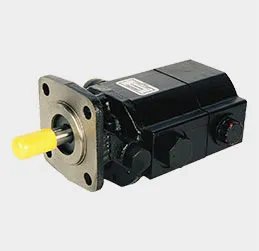stamping sheet metal parts
Understanding Stamping Sheet Metal Parts Process, Applications, and Advantages
Sheet metal stamping is an essential manufacturing process used to produce precise metal parts from flat sheets of metal. This method has gained significant traction in various industries due to its efficiency, accuracy, and cost-effectiveness. In this article, we will explore the stamping process, its applications, and the advantages of using stamped sheet metal parts.
The Stamping Process
The stamping process involves forming flat metal sheets into specific shapes using a variety of techniques, including bending, punching, cutting, and embossing. This is typically achieved using a stamping press, which applies force to the metal sheet through tools known as dies. The dies are specially designed to create the desired shapes and features in the metal.
1. Material Selection The process begins with selecting the right type of metal, which is often steel, aluminum, or brass, depending on the requirements of the finished part. The thickness of the sheet metal can vary, typically ranging from 0.5 mm to several millimeters.
2. Die Design Next, engineers design the dies that will be used in the stamping process. This stage is critical, as a well-designed die ensures that parts are produced with high precision and consistency.
3. Stamping Operations The actual stamping process includes several operations. Common techniques are - Punching Removing material from the metal sheet using a punch and die to form holes or specific shapes. - Bending Deforming the metal to create angles, curves, or complex geometries. - Embossing and Debossing Creating raised or recessed designs on the surface of the metal. - Blanking Cutting the metal sheet into flat pieces that will be further processed.
4. Finishing After stamping, the parts may undergo various finishing processes, such as cleaning, painting, or coating, to enhance appearance and corrosion resistance.
Applications of Stamped Sheet Metal Parts
Stamped sheet metal parts are used in a multitude of industries, showcasing their versatility
- Automotive Stamped components are critical in the production of car bodies, brackets, and interior parts. The automotive industry benefits from the lightweight yet strong properties of stamped metal. - Electronics Enclosures for devices, heat sinks, and connectors are often produced by stamping, taking advantage of the precision offered by this manufacturing method. - Aerospace The aerospace sector employs stamped metal parts for structural components and housings, where material strength and weight are crucial. - Appliances Household appliances like refrigerators, washing machines, and microwaves make extensive use of stamped metal parts for their frames and casings. - Construction Building materials such as brackets, wall panels, and roofing elements frequently utilize stamped metal techniques for durability and reliability.
stamping sheet metal parts

Advantages of Stamped Sheet Metal Parts
The popularity of sheet metal stamping can be attributed to a variety of advantages it offers to manufacturers and end-users alike
1. Cost-Effective Once a die is made, large quantities of parts can be produced at a relatively low cost, making stamping an economically favorable choice for mass production.
2. High Precision The stamping process is known for producing parts with excellent tolerances, ensuring that components fit together seamlessly during assembly.
3. Strength and Durability Stamped metal parts exhibit high strength due to the material deformation process, making them suitable for demanding applications.
4. Material Efficiency Stamping maximizes the use of raw materials, generating minimal waste compared to other manufacturing methods.
5. Versatility The ability to produce intricate designs and accommodate various thicknesses and types of metal makes stamping a flexible solution for manufacturers.
6. Rapid Production The automation of stamping processes allows for quick turnaround times on large orders, ensuring timely delivery to customers.
Conclusion
Stamping sheet metal parts is a vital manufacturing process that serves diverse industries by producing high-quality, cost-effective components. With its ability to create complex shapes and maintain precision, it continues to be a go-to solution for manufacturers looking to enhance productivity and efficiency. As technology advances, it is likely that sheet metal stamping will evolve further, integrating innovations such as automation and advanced materials to meet the ever-growing demands of modern manufacturing.
-
Aluminium Pressure Die Casting High-Precision & Durable Solutions for Complex PartsNewsJul.08,2025
-
Top Aluminum Sand Castings Manufacturer – Precision Green Sand Castings for Industrial NeedsNewsJul.08,2025
-
Precision Lost Wax Casting Quotes – High Accuracy Custom Parts Lost Wax Precision Casting ServicesNewsJul.07,2025
-
High-Quality Sand Used for Casting - Superior Sand for Sand Casting ProcessesNewsJul.07,2025
-
China Supply High End Metal Stamping Parts Sino - Precision Manufacturing FactoryNewsJul.06,2025
-
High-Quality Automotive Investment Casting Services Precision & Sand Casting SolutionsNewsJul.06,2025















